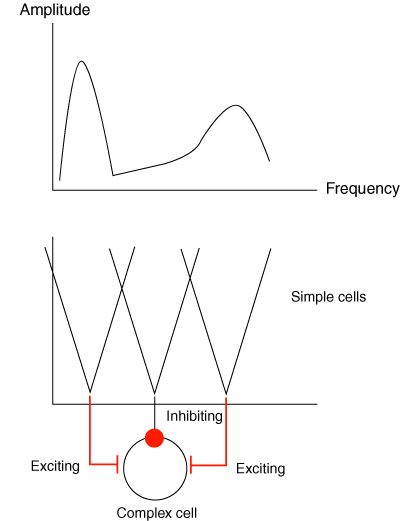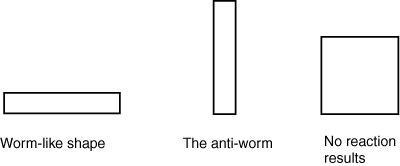Thermoreception
Thermoreception, the detection of temperature changes, is present in most animals, but has been little studied. Many insects have temperature-sensitive nerve endings, either on their legs to detect ground temperature, or on their antennae to detect air temperature. Fish have thermoreceptors on the skin, lateral line (which also detects electrical signals and vibrations), and in the brain. Birds are not known to have many thermoreceptors in the skin, but have them on the tongue and bill in some species. Mammals have distinct heat and cold receptors distributed throughout the skin. There are also thermoreceptors deep within the body that can cause shivering even when skin and brain receptors are detecting a constant temperature. Thermoreceptors in the spinal cord can influence shivering, panting, and changes in blood flow.
Mechanoreceptors and Hearing
Many arthropods have vibration sensitive hairs in their limb joints. Tactile sensations can be propagated via hairs or by the deformation of skin neurons. Such neurons are called mechanoreceptors. These receptors are also involved in hearing. Sound waves are propagated by vibrations of air or water molecules. Small changes in pressure that result from these vibrations are detected by mechanoreceptors that can rapidly adapt, and so are sensitive to sound vibrations.
The silkworm moth has one of the simplest types of auditory systems, which converts sound pressure waves into vibratory motion. These moths have two simple ears, each consisting of a tympanic membrane and two receptors imbedded in connective tissue. There are two tympanic membranes on either side of the thorax that transmit sound waves from the environment to the receptors; each receives different sound intensities. The A1 receptor cell detects low-intensity sounds. The frequency of the impulse from the A1 cell, or the rapidity with which it fires, is proportional to the volume of the sound, allowing the moth to determine if a predatory bat is approaching or is merely present in the area. The direction of the source is detected by the difference in both the time of arrival and intensity of the vibrations at the two ears. When the bat is above the moth, the sound of its cry will be interrupted by the beating of the moth's wings, but if the bat is below the moth, this will not happen. This is how the moth determines relative altitude. The A2 cells only detect high-intensity, or loud, sounds. It produces an emergency response only when the bat is nearby by disrupting the moth's flight control. In response, flight becomes erratic, an evasive maneuver which helps the moth to escape when the bat is within striking distance.
Most animals utilize far more complex auditory systems than that of the silkworm moth. A bullfrog call has many frequencies at various amplitudes within a single timeframe because many sounds are emitted at once. The auditory nerves of the receiver must respond to these variations. Nerve cells designed to receive a specific amplitude and frequency excite a more complex nerve, while other neurons inhibit it. The system would look something like that of . Receptors excited by a high amplitude wave (loud sound) excite a more complex neuron. Receptors that receive low amplitude sounds inhibit the same complex neuron. In this manner, distinctive sounds can be recognized, rather than just the intensity of sound that the silkworm moth detects.

Photoreceptors and Vision
Photoreceptors cells contain a pigment that is sensitive to light. Light reversibly changes the shape of the pigment molecules. This process leads to electrical changes in the receptor membrane that in turn lead to the propagation of a nerve signal. In some animals, such as the earthworm, photoreceptors are scattered over the skin. Usually, however, photoreceptors are clustered together to form an eye. Primitive eyes detect only the presence or absence of light. In the more advanced vertebrate eye, there are two types of receptors: rods and cones. Rods are elongated and sensitive to low levels of illumination. This vision is colorless and has poor definition. Rods are predominant in nocturnal animals, for which increased sensitivity is important. Cones are sensitive to high levels of illumination and produce a sharp picture. Unlike rods, cones contain more than one type of photopigment, each sensitive to different wavelengths of light. Cones provide color vision.
Case Study: Toad Vision
Toads, like many animals, detect their prey visually. A shape that is long in
the horizontal direction looks like a worm, and so the toad's brain interprets
that as food. A square shape elicits no reaction from the toad, and a tall,
thin shape is seen by the toad as the "anti-worm."



 payment page
payment page



